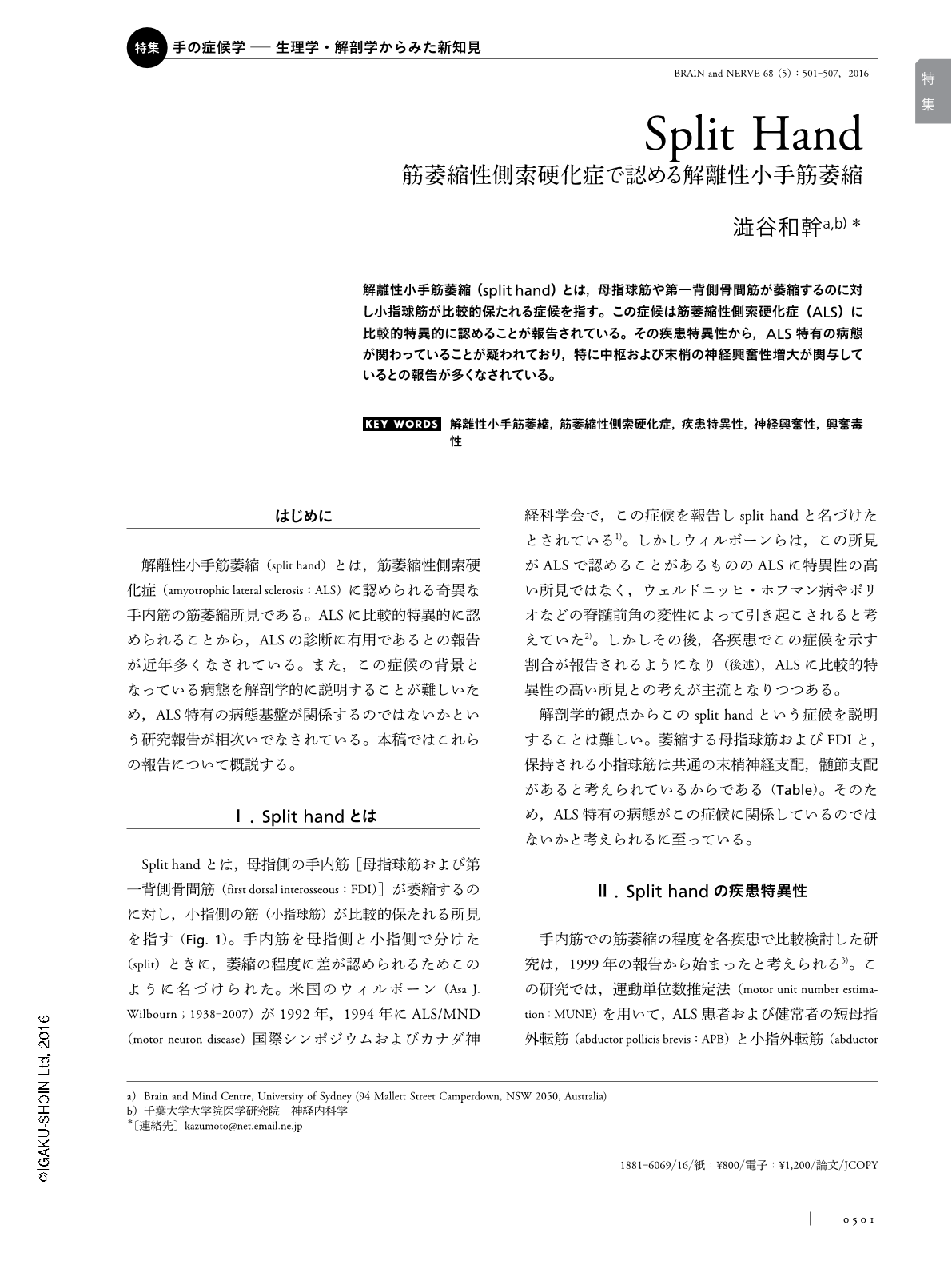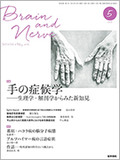Japanese
English
- 有料閲覧
- Abstract 文献概要
- 1ページ目 Look Inside
- 参考文献 Reference
解離性小手筋萎縮(split hand)とは,母指球筋や第一背側骨間筋が萎縮するのに対し小指球筋が比較的保たれる症候を指す。この症候は筋萎縮性側索硬化症(ALS)に比較的特異的に認めることが報告されている。その疾患特異性から,ALS特有の病態が関わっていることが疑われており,特に中枢および末梢の神経興奮性増大が関与しているとの報告が多くなされている。
Abstract
Split hand is a peculiar atrophy of hand muscle and was named by Willbourn in 1992. In this phenomenon, the hypothenar muscle is relatively preserved, but the thenar and the first dorsal interossei (FDI) muscles are preferentially involved. Some studies have measured compound muscle action potential (CMAP) amplitudes of intrinsic hand muscles in various neurological diseases and have revealed that this phenomenon is a specific feature of amyotrophic lateral sclerosis (ALS). The measurements of CMAP amplitude in intrinsic hand muscles may be useful for diagnosis of ALS. FDI and thenar muscles are innervated by the same ulnar nerve and same spinal segments (C8 and Th1), although atrophies of these muscles are dissociated. Anatomical innervations are not enough to explain this phenomenon. Motor neuronal hyperexcitability potentially contributes to motor neuron death in ALS, and in several articles, it is reported to be the possible mechanism of this phenomenon. In healthy controls and ALS patients, cortical and peripheral motor nerves, which project to the thenar and FDI muscles, may be more excitable than those of the hypothenar muscle. This article reviews the findings of previous articles about the utility of this phenomenon as a diagnostic marker, and its potential mechanisms.

Copyright © 2016, Igaku-Shoin Ltd. All rights reserved.


